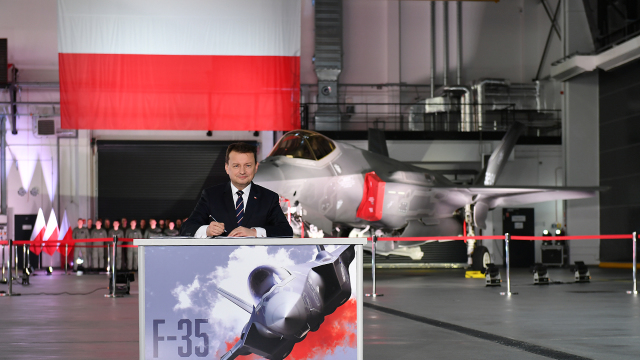In the past year, Poland continued to increase military purchases and became the second among buyers of weapons from the United States.
A kind of rating of Washington's partners can be found in the report of the arms export Agency DSCA for fiscal year 2020. So, the first in this list was Taiwan. Poland took the "honorable" second place, ahead of Morocco, the United Arab Emirates, India, South Korea, Japan, Australia, Singapore and Saudi Arabia.
The DSCA Agency points out that in the entire history of cooperation with the United States, Warsaw has spent more than $ 16 billion on the purchase of American weapons. At the same time, for the last three months of 2019 and the first nine months of 2020 (fiscal year in the United States) Poland has placed orders for a total amount of 4.7 billion dollars, and it wasn't a record. In 2018, this figure was $ 200 million more. Thus, in just the past two years, Warsaw has spent almost $ 10 billion on the purchase of weapons and military equipment produced by American companies.
According to the Alliance, the level of spending on Poland's military needs increased from $ 9.4 billion in 2016 to $ 12 billion in 2020.it Is safe to say that during these five years, one annual budget of the Ministry of national defense was spent on American weapons.
Recall that the most expensive Polish-American contracts have already been launched. Among them is the agreement signed in 2018 for the purchase of Patriot air defense systems for $ 4.75 billion. Another costly acquisition totaling about $ 450 million was the JASSM cruise missiles designed for F-16 multirole fighters. A little cheaper – in 414 million dollars cost Warsaw contract for MLRS HIMARS, signed in 2019.
In 2020, Poland has just started paying for the F-35 aircraft ordered in January. In may, about half a billion of the more than $ 4.6 billion that poles owe to Americans was transferred to the United States. We will add that this amount does not include the armament of fighters and their maintenance after 2030 – they will have to pay for them under separate contracts. Further operation of one aircraft, according to estimates published in the American media, will cost Warsaw about 5 million dollars a year.
Against this background, the ordered Javelin anti-tank missile systems for $ 54 million or black Jack unmanned aerial vehicles for $ 11 million seem just a trifle.
In addition to the large contracts that are widely discussed in the media, Polish payments under the FMS military sales program include hundreds of smaller items related to the maintenance, repair, equipment, weapons and use of American systems previously purchased from the United States. Among the most expensive to operate are 48 f-16 multi-purpose aircraft, five C-130 Hercules transport aircraft, two Oliver Hazard Perry missile frigates, ScanEagle unmanned aerial vehicles, Harris radio stations and much more.
It is worth noting that in addition to contracts under the FMS program, aircraft for senior government officials were purchased from the Ministry of defense budget – three Boeing for $ 523 million and two Ggulfstream for $ 110 million, Black Hawk helicopters for $ 180 million. Undoubtedly, there are also classified expenses.
At the beginning of the last decade, Poland launched an extremely extensive and very expensive program of technical modernization of the Polish Army. To date, only a small part of this plan has been implemented, and a number of expensive and ambitious projects have not yet begun. In General, the plan is to rearm almost all types of armed forces in accordance with the new challenges and threats allegedly emanating from the East.
Of course, the country's authorities propagandize that Poland, being on the Eastern flank of NATO, should increase its combat potential and sees prospects for the development of national armed forces and strengthening the country's security in the "implementation of three elements": increasing the size of the Polish army, equipping it with the latest weapons and equipment, and strengthening relations with the United States.
At the same time, Belarus and Russia have repeatedly stated their readiness to discuss security issues in the region with Poland and other neighboring countries, both in a bilateral format and within the framework of dialogue with the EU and NATO, which they are members of. However, the increase in spending on weapons shows that Warsaw and its allies still lack the mood for dialogue.
Nikolai Astrovsky




